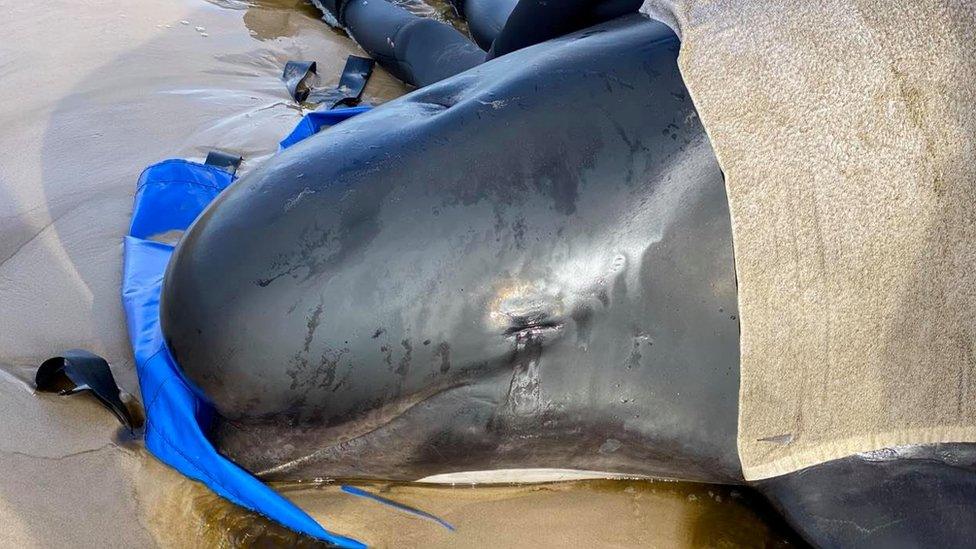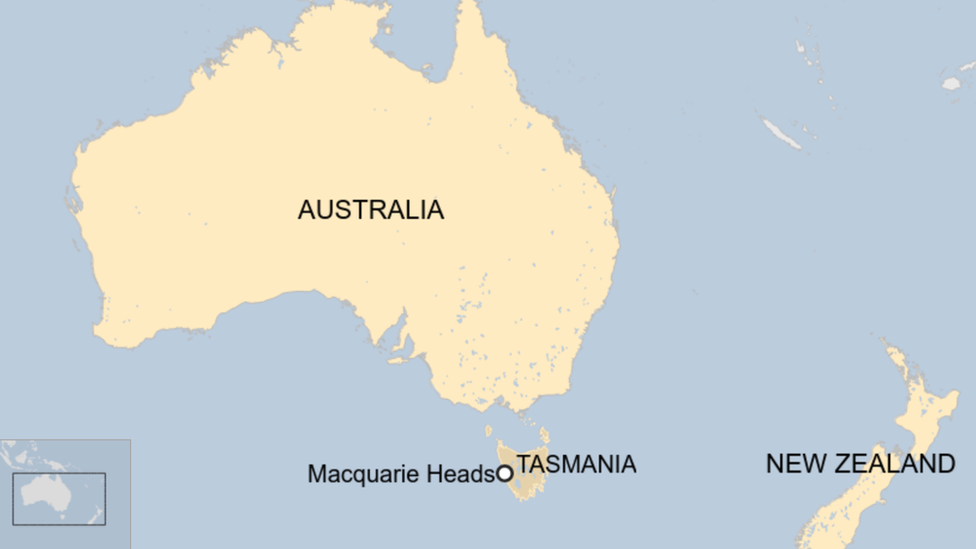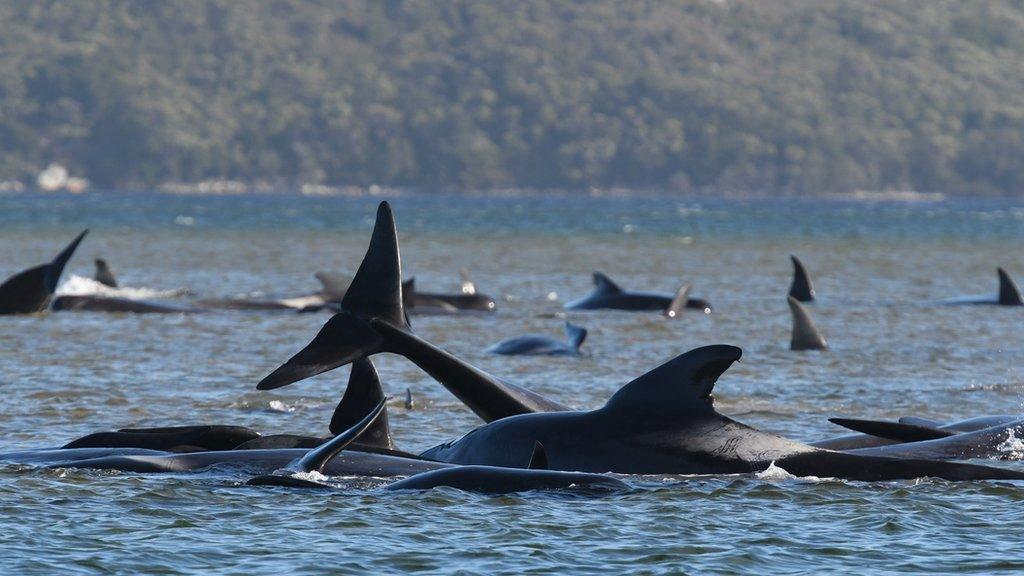Tasmania pilot whales: Australia to euthanise stranded animals
- Published
How to rescue a stranded whale
Several surviving pilot whales beached in a mass stranding in Tasmania will be euthanised as they cannot be saved, officials have said.
About 380 whales have already died in Australia's worst stranding on record.
Tasmania's government said 88 of the animals had been rescued so far and there was hope for another 20.
But rescuers said four surviving whales that were too exhausted to be saved would have to be euthanised as it was "the most humane thing to do".
"These are animals we've given a chance, we've tried to release them but they haven't done well," Kris Carlyon with the Marine Conservation Project explained.

Rescuers have been trying to keep the survivors wet and cool
He said there was no viable chance to successfully release them again and "in this case the best, most human course of action is to euthanise".
The four animals in question were assessed by a vet before the decision to kill them was taken, "based purely on animal welfare grounds".
What will happen to the carcasses?
With close to 400 dead whales on the Tasmanian beach, the rescue operation is now focusing on what to do with the carcasses.
The animals' bodies could either be left at the beach, buried there, taken to a landfill, or taken out to sea.
"We are starting to form a plan," Nic Deka of the Tasmanian Parks and Wildlife Service told reporters on Tuesday. "Our preference is for disposal at sea. We're still taking expert advice as to exactly where the drop-off point may be.
"Our focus for the next few days will be trying to contain the spread of carcasses because as the whales start to decompose they will bloat and float, and with wind and tide they will drift."

Dead pilot whale calves on the beach in Macquarie Heads
He warned that if the bodies should wash back into the sea, they could pose a significant navigation hazard. The carcasses could also attract predators such as sharks and even present an environmental health issue as the decomposition of such a large number of animals could affect oxygen levels and hence marine life.
"So the strategy is going to be to collect and contain," Mr Deka explained. "When conditions are suitable we will take them out to sea and release them."
What about the rescued whales?
Dr Carlyon said they were pleased they had been able to rescue just under 90 whales so far.
"On Monday, as we were coming up with plans, if we had said 90 we would have been very happy with that. We are really, really pleased with that number," he said.
Dr Carlyon added that the rescued whales were being released into deep water, at which point "they are on their own".
"Tracking work in the past has shown that animals released individually do reform after a period and behave as we would expect," Dr Carlyon added. "We are hoping they are forming those bonds again."
How did the whales get stranded?
The pilot whales washed up on sand spits in the sea around an area called Macquarie Heads.
The stranding is one of the largest ever recorded and eclipses a previous national record of 320 whales beached in Western Australia in 1996.
It is not fully understood why the whales became stranded but pilot whales are known to be more prone to getting beached. They are not considered endangered, external, although exact population numbers are not known.

There are a range of theories for why beachings occur. Some say the animals could be getting disoriented after following fish they hunt to the shore.
Others believe that one leading individual can mistakenly led whole groups to shore.
Researchers also believe that such groups are susceptible around beaches which gently slope across a wide area because the whales' sonar pulses can fail to detect the shoreline in shallow waters.
- Published23 September 2020

- Published22 September 2020

- Published30 November 2018
